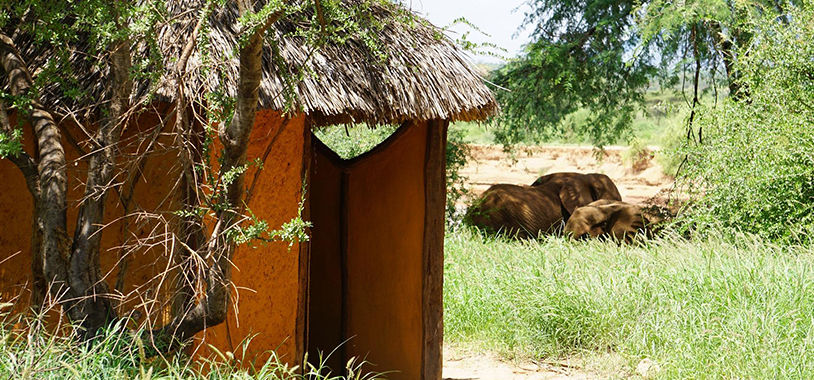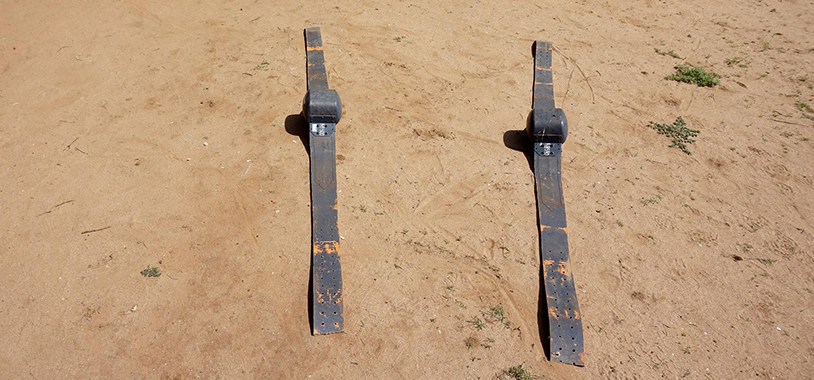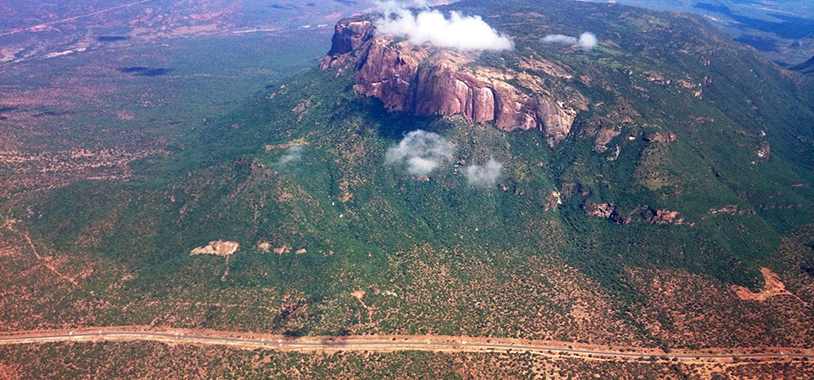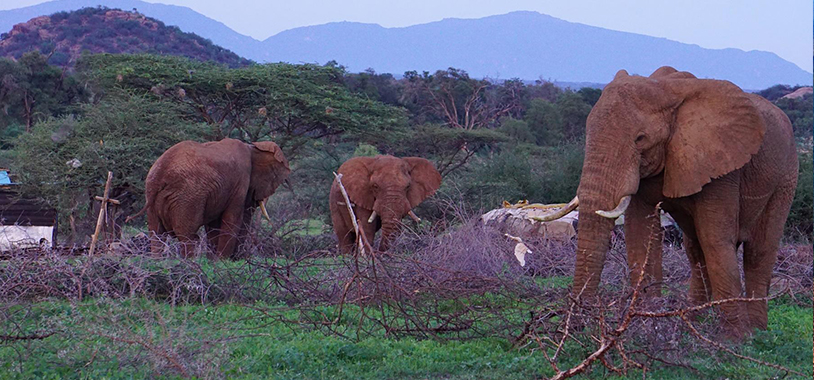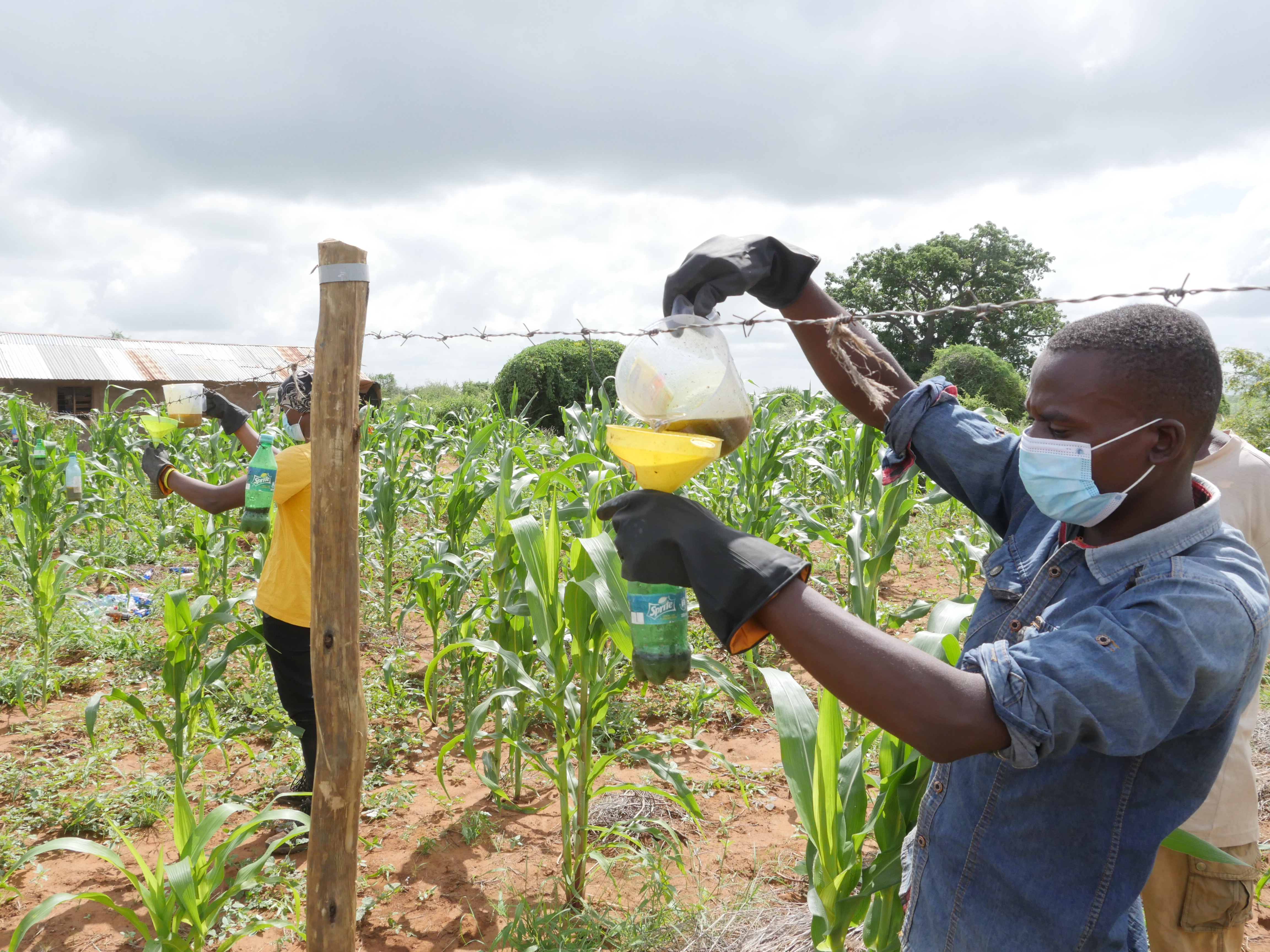With the wet season in full swing with recurrent thunderstorms passing through the Samburu area in the late afternoon, the short virgin grass of just a few weeks ago has matured into long stems. Elephants have come to Samburu in large numbers, including many sporadic families not normally seen in the area. The elephants peacefully feast on the bountiful blades of grass, often in large groups consisting of several families. It is now common to also see large bulls, many of which are well known Samburu elephants. We’ve even seen groups of bulls, of varying age, close to camp on the banks of the Ewaso Ng’iro, sometimes coming even right up to camp.
This past weekend, with the river running full, a cautious group of bulls started crossing the muddy Ewaso. As soon as Leakey, the lead bull, spotted me on the camp grounds attempting to get closer for photos, the march came to a halt. I slowly backed up and retreated into the office until I started hearing the loud splashes once again, indicating that the bulls had continued their slow march towards our bank. I quickly exited from the other side to catch a few shots of the bulls who had come right up to our restroom area!
This influx of large bulls fills the research team with excitement as it means the start of preparations for collaring.
To prepare for the collaring campaign and keep track of bull activity in general, the team needs a good idea of which bulls are in neighboring areas. One bull in particular, Boru, has been top priority, as his collar had stopped reporting effectively hiding his whereabouts; we wondered if he may have succumbed to poachers. The bull monitoring involves both recon flights with Save The Elephant’s aircraft, and the field vehicles. On April 21, I had the immense pleasure of joining Frank, David, and Bernard, for a recon flight north of Samburu towards Kalama and Sera conservancies to search the area for specific elephants, listening to VHF radio signals. While we did spot two groups of elephants, neither Boru nor the other individuals of interest were detected. What an amazing experience it was however, to observe the Northern Kenyan bush from the air, while flying right above and next to the flanks of tall escarpments such as mount Ololokwe, with its flat top and sharp extremities plummeting towards the rangelands below.
Approximately two weeks later, we receive a report of bulls in Samburu West. We quickly shoot off from camp in the afternoon, heading towards Westgate and spot two groups of bulls in the distance across the Ewaso Ng’rio banks, right in the middle of settlements and nearby livestock! In order to ID the bulls, we quickly drive over the other side of the bank to reach the area before nightfall. As we arrive in the Loruko settlement, we spot the bulls right in the middle of bomas! Thankfully, they appear to be empty, and the few residents around appear to be staying further away in neighboring bomas with their livestock. What an amazing sight it is to see these massive bulls towering above the bomas while peacefully eating grass and shrubs.
We suddenly rejoice as one of the bulls is in fact Boru! He is without his collar, and must have ripped it off at some point. What a relief it is to know this bull has not been a victim of poaching! After a chat with the locals who appear unfazed by the presence of the bulls, we quickly head back as nightfall sets in.


